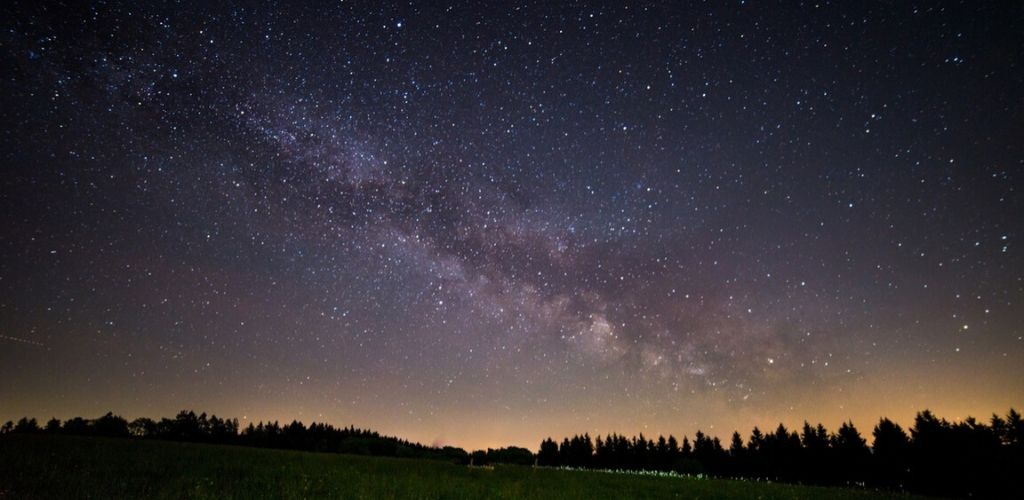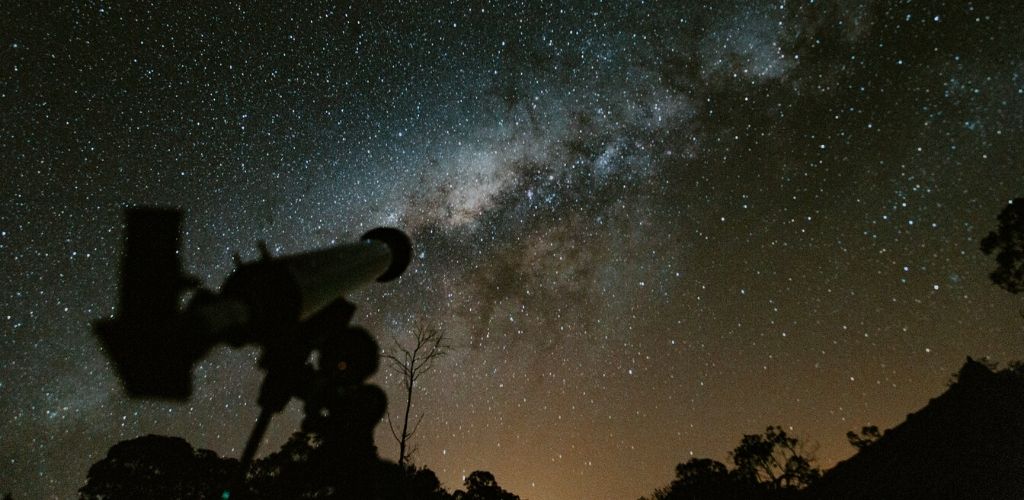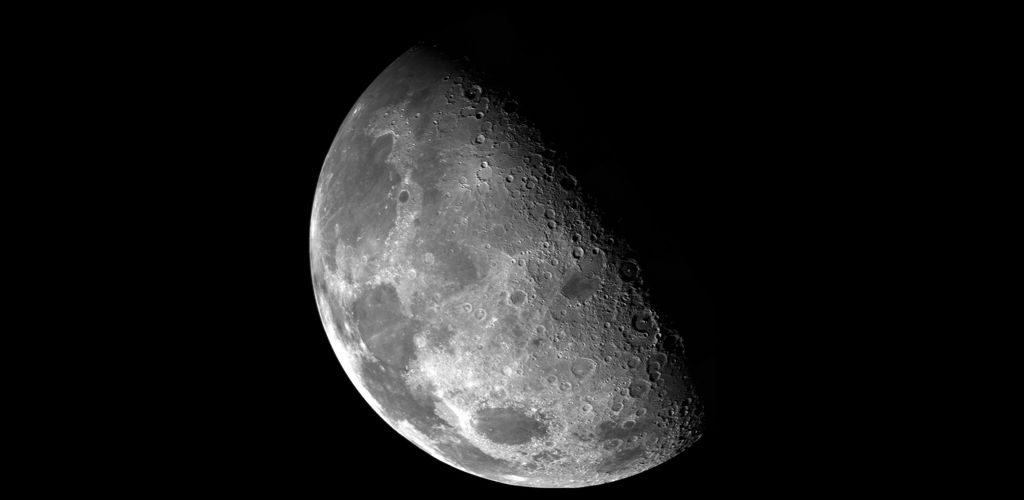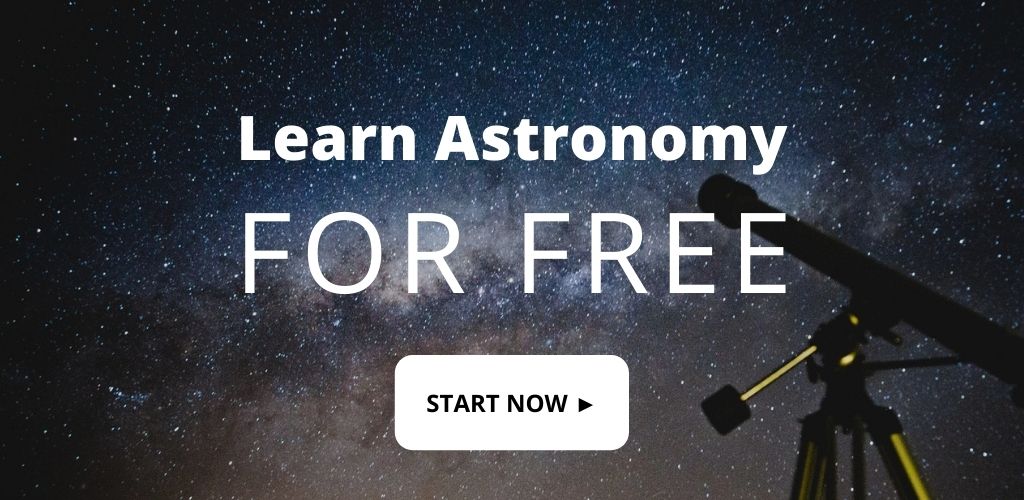
General questions about astronomy

Is astronomy an expensive hobby?
Do I need a telescope to do astronomy?
I’m new to astronomy and I don’t know any amateur astronomer. What should I do?
Can amateur astronomers really help research?
What is right ascension and declination?
Can I teach children astronomy without using a telescope?
Does light pollution make astronomy impossible?
Astronomy with a telescope, binoculars, the naked eye

I would like to buy my first telescope. Do you have any advice?
What is a GoTo mount and is it worth its price?
Which telescope should I choose for astrophotography?
What kind of telescope do I need to observe the planets?
What I see through my telescope doesn’t look like NASA images at all, why?
Are binoculars better than a telescope?
What can I see with the naked eye in the night sky?
Celestial objects

Why is the Moon bigger when it is near the horizon?
Can we use a telescope to see the flag left on the Moon by Apollo astronauts?
When is the best time to watch a meteor shower?
I saw a light moving very fast in the night sky last night. What could it be?
Is astronomy an expensive hobby?
It can become one, but it is not always expensive! It really depends on the kind of observations you want to make and the seriousness of your approach.
Astronomy can be practiced inexpensively with the naked eye or with binoculars. Small telescopes, with an aperture of 10 to 15 cm, are between 200 and 400 euros. Larger telescopes, which allow you to see further, necessarily have a higher cost and also include advanced functions, such as a computerized mount or a GoTo console.
If you want to do astrophotography, you will need a camera, either an SLR or a CCD camera, both of which are quite expensive. However, you can do astrophotography with a simpler device or even with a photophone.
Planetary imagers have used cheap computer webcams with good rendering for years! The trick is to understand that it is not necessary to spend a lot of money, but that if you want to do this seriously, you don’t have to buy everything at the same time.
Do I need a telescope to do astronomy?
Not at all. Many experienced astronomers only have binoculars, and some casual astronomers observe the sky with the naked eye. There is so much to see without using a telescope, from the constellation patterns to the brightest stars to the five planets (Mercury, Venus, Mars, Jupiter and Saturn), to the phases of the Moon and to meteor showers.
If you observe the stars from a very dark place, you may also have the chance to see the Milky Way. And then there are the star clusters, like the “seven sisters” of the Pleiades or the Hyades, both located in the Taurus constellation.
And the most distant object you can see without a telescope or binoculars is the Andromeda Galaxy, which is 2.5 million light years away, although some observers have also stated that they can observe the Triangle Galaxy at the naked eye. It is 2.9 million light years away.
I’m new to astronomy and I don’t know any amateur astronomer. What should I do?
Joining an astronomy club is probably one of the best things for a beginner to do. Take a look on the Internet to find one near you. By doing this, you will meet people who share the same passion as you, and you will be able to share advice.
Can amateur astronomers really help research?
Astronomy is one of the few sciences where amateurs can make real contributions to research conducted by professional astronomers.
Researchers in astronomy and astrophysics often work with teams of amateurs and make discoveries together. Amateurs still discover comets, asteroids, novae and supernovae… But their observations of more common celestial objects are also vital for the continuous studies carried out on them.
For example, a large number of amateur astronomers observed Jupiter every night that was clear enough to see it. They are the first to have seen the changes in Jupiter’s areas and belts, or the meteors in its atmosphere.
Since professional astronomers have to fight a little for spending time on big telescopes and there are not always space probes around Jupiter, amateurs are often the first to observe the slightest change.
Another area in which amateurs dominate is variable stars. There are far too many variable stars for professionals to track them all.
What is right ascension and declination?
Imagine that the sky above us is in a celestial sphere. The declination is the equivalent of latitude on this sphere and the right ascension is the equivalent of longitude.
Can I teach children astronomy without using a telescope?
Learning the patterns of the constellations and the names of the brightest stars is not only a good way for children to familiarize themselves with the night sky, it also involves them in what they learn in their History course.
Many constellations are named with reference to figures from Greek mythology, such as the story of the heroic Perseus, who rode his winged horse, Pegasus, to save Princess Andromeda from a sea monster (represented in the night sky by the Cetus constellation).
Princess Andromeda had been exposed naked on the rocks, given to the monster to calm the Gods that her parents Cassiopeia and Cepheus had made angry.
All this appears in the sky in the form of constellations whose patterns can be memorized by children, from the W of Cassiopeia to the square of Pegasus.
In addition to the constellations, there are the phases of the Moon that children can follow throughout the month, and the movement of bright planets across the sky.
Does light pollution make astronomy impossible?
It doesn’t help, that’s why astronomers try to protect the night sky by asking cities to keep street lights at a reasonable level.
However, astronomy is still possible even in cities. Very bright objects like the Moon, planets and main stars are always visible. With binoculars or a telescope, you can see a number of deep sky objects.
But the weak stars won’t be visible. For example, with the naked eye, you should only be able to see at a magnitude of 3 or 4, rather than 5 or 6. A good test for light pollution is to see if the Milky Way is visible or not.
A lot of people have never seen a really starry sky because of where they live. You can buy a light pollution filter for your telescope that will block sodium light from street lights, but that only reduces the problem, not fixes it.
What is daylight astronomy?
Astronomy is not only at night. During the day, you can also observe the Moon, the brightest planets and the Sun. However, you must be very careful about the Sun. Do not look at the Sun with your naked eye, nor with a telescope or binoculars.
I would like to buy my first telescope. Do you have any advice?
When choosing your first telescope, one of the first mistakes beginners make is to take the highest magnification. In reality, you have to look for the largest aperture diameter of the instrument.
Avoid small telescopes that claim to have a magnification of x400, or even x500. The aperture diameter is very important and here is why: to observe weak objects in the night sky, your telescope must be able to collect as much light as possible. The larger the diameter of the telescope tube, the larger the aperture and the more you will be able to see weak objects.
If you decide to choose a refracting telescope (an astronomical telescope), the minimum aperture you need is around 100 mm whereas with a reflector, like a Dobsonian, the ideal is an aperture around 100-150 mm. A good telescope for beginner costs between 300 and 700 euros (US$337 – US$788)
What is a GoTo mount and is it worth its price?
GoTo mounts are motorized mounts that literally “go to” any object you want to observe. By simply aligning the telescope with the North Star and another bright star so that the computer knows where the other items are located, you can use the hand controller to select an object from the computer database and order the mount to point the telescope at this object.
Most GoTo systems work very well and even if you have to spend a few hundred dollars more for that, they have a number of advantages. If you are not familiar with the constellations and celestial navigation, they will do the job for you. And if the sky is not completely clear, GoTo telescopes can guide you to your target quickly before the clouds return. The downside is that you will not learn the position of the constellations since the computer does everything for you.
How to maintain a telescope?
Most modern telescopes are solidly built, but you still need to treat them with care. The most important and delicate part of your telescope is its eyepieces. They can be covered by dust and this affects the quality of what you will see through.
When cleaning them, be very careful. Do not rub them with a cloth or flannel, you may scratch the optics. Use cotton flower soaked in water or liquid for the optics. Sometimes you can find spider webs and spiders in the telescope tube, especially if you store it in the garage.
A telescope, for example, must be collimated regularly to refine the optimal aperture. If you don’t do do so, the quality of what you see will deteriorate. If you have a motorized mount, you will need to ensure that the gears are well oiled.
What kind of telescope do I need to observe the planets?
A refractor (refracting telescope), which uses a lens to focus light into the eyepiece at the other end, works best for planets and the Moon.
What I see through my telescope doesn’t look like NASA images at all, why?
You should not forget that these photos taken by Hubble are not only taken with a much larger telescope from space, but that they are also much processed.
The stunning colors in most NASA images are not true colors, but representative colors dictated by the type of filter used. In real life, nebulae often have no color. In fact, in most cases, there is not enough light entering an amateur telescope for the observer to even discern a color. Astrophotographers also use filters and after-treatment to make their photos colorful, often using the same color palette as Hubble.
But don’t let that stop you. This nebula you see may be faint and pale, but remember that it represents the expansive death of a star like our Sun and that its light has traveled for hundreds of thousands of years. The fact of knowing that this is what you are observing is incredible.
Are binoculars better than a telescope?
Depending on what you want to observe, both have their advantages. Binoculars are easy and quick to use and allow you to see the Milky Way, star clusters and the Moon. A telescope, not as simple, allows you to see details of the Moon, planets and galaxies.
What can I see with the naked eye in the night sky?
You don’t need a telescope or binoculars to do astronomy. So go out in the middle of the night to observe the stars. What you see are objects similar to our own Sun and others that have different shapes, colors, ages…
And that’s not all! Planets, like Venus, Mars, Saturn and Jupiter, are visible to the naked eye, without forgetting groups of stars gathered in clusters, including the Pleiades, and some well known galaxies as the spiral galaxy closest to us, Andromeda, and the Milky Way, which looks like a band in the night sky.
Numerous star patterns, more commonly known as constellations, are also fun to observe and also contain objects visible to the naked eye, such as the giant red Betelgeuse and the Orion nebula, in the constellation of the same name.
Which telescope should I choose for astrophotography?
You will need a telescope with a right ascension motor, preferably one that is motorized with the possibility of following the sky. You should also verify that you have an adapter to attach it to your telescope.
Why is the Moon bigger when it is near the horizon?
The Moon is not bigger, it’s an optical illusion that gives this impression. The illusion is really very visible when it is the full moon.
We don’t really have an explanation for this phenomenon, but one of the possibilities is that there are familiar objects on the horizon like trees, houses, which allows us to estimate the dimensions and, by placing the Moon behind these objects can give the impression that it is larger than it really is. Because we know that the objects on the horizon are closer, so we mistakenly think that the Moon must be too.
What is the Blue Moon?
The popular definition is that it is the second full moon to arrive in the same month. The lunar cycle is 29 days and as most months have 30 or 31 days, there can be a full moon at the start and end of the same month.
A Blue Moon, which has nothing to do with the color of the Moon itself, arrives every two or three years. A Blue Moon can also refer to a third full moon out of four in the same season, in other words the period between a solstice and an equinox, and vice versa.
Can we use a telescope to see the flag left on the Moon by Apollo astronauts?
Unfortunately, it is impossible to see the flag, the footprints or the lunar lander left on the surface of the Moon by the Apollo missions. The average distance between us and the Moon is 384,400 kilometers and the flag is barely 1 meter wide and the lander less than 10 meters.
At this distance from the Moon, the lander has an angular diameter of 0.002 arc seconds. Most amateur telescopes have a resolution of around 1 arc second. The Hubble Space Telescope is limited to 0.1 arc seconds, so it can see neither the lander nor the Apollo flag (Hubble is intended to see large objects, very far away, like galaxies , no little things up close).
Currently, the only device capable of observing Apollo’s landing sites is NASA’s Lunar Reconnaissance Orbiter, which has taken photos of the landers, footprints and flags.
Where is the North Star?
Many believe that the North Star (also called Polaris) is the brightest star in the sky. This is not true. In fact, with a magnitude of +2, it is far from being the brightest, but it is visible to the naked eye if you know where to look.
The North Star is found in the constellation Little Dipper, Ursa Minor. But first you have to go through the Big Dipper, Ursa Major, to find your way to Polaris.
The Big Dipper has a pattern, or asterism, easy to recognize, which is also called “the pan” or “the plough”. Locate the first two stars of the pan, named Merak and Dubhe, and draw an imaginary line that runs through them and which rises about five times the space between Merak and Dubhe and you will find Polaris.
Can I name and buy a star?
Some claim to be able to sell star naming rights to offer to relatives as gifts, others plots of land on the Moon. But neither is official or legal.
In addition, the stars they claim to sell are weak stars because all the brightest ones already have a name. If you want to buy a star name, know that no astronomer will use it and that it will not be in any astronomical catalog.
Only the International Astronomical Union has the authority to name these astronomical objects although recently they have begun to accept suggestions from the public when choosing names.
When is the best time to watch a meteor shower?
The main meteor showers are the Lyrids (April), the Perseids (August), the Taurids (October and November), the Aquarids (May), the Leonids (November) and the Geminids (December).
I saw a light moving very fast in the night sky last night. What could it be?
These points of light which move, often quickly, are communications satellites orbiting the planet. They are very numerous, but often weaker than the International Space Station which can also be seen following a similar path through the night sky.
